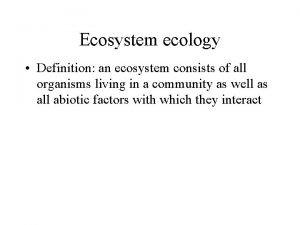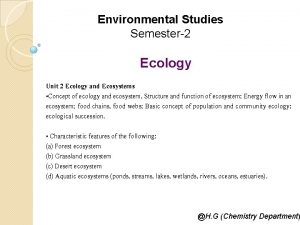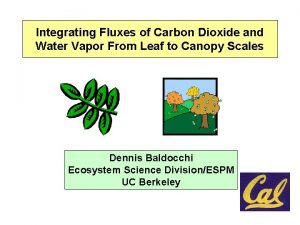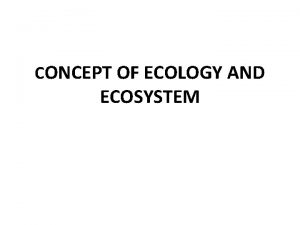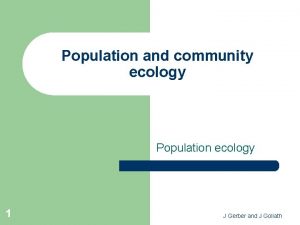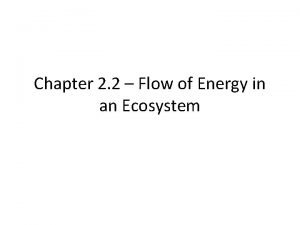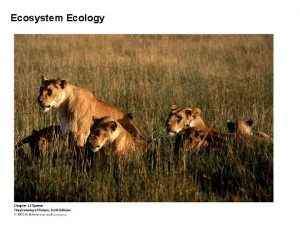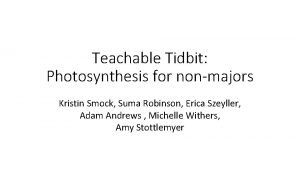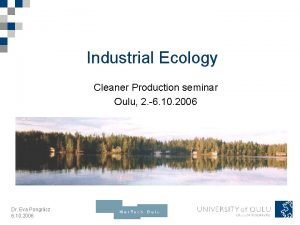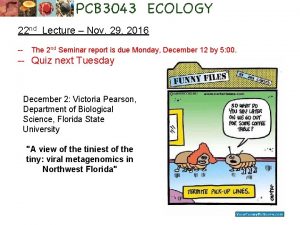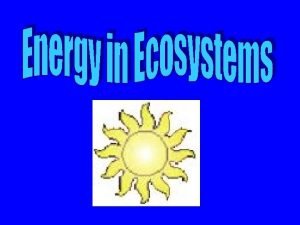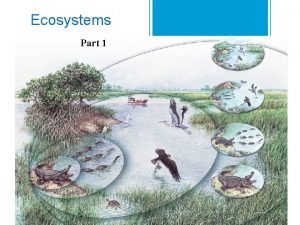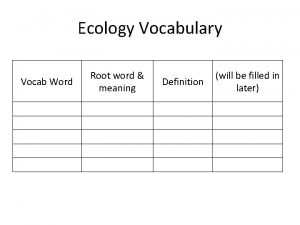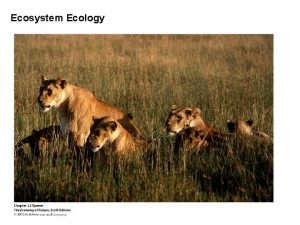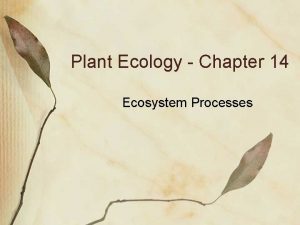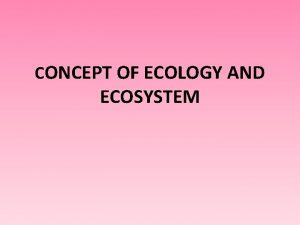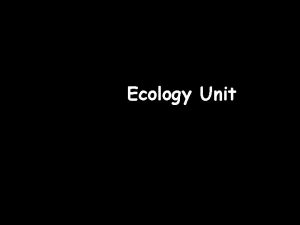Ecosystem ecology Definition an ecosystem consists of all


















- Slides: 18

Ecosystem ecology • Definition: an ecosystem consists of all organisms living in a community as well as all abiotic factors with which they interact

Ecosystem framework • Ecosystems are organized into trophic levels: – Primary producers, primary consumers, secondary consumers, detritivores • Laws of physics and chemistry apply to ecosystems – Law of conservation of energy, second law of thermodynamics, conservation of Elements

An overview of ecosystem dynamics

Primary production • Amount of light energy converted to chemical energy (organic compounds) by autotrophs in an ecosystem during a given time period – It is the result of photosynthetic production – Sets the limits for the ecosystem’s energy budget

Components of primary production

Gross and Net primary production • Gross primary production (GPP): total primary production • Net primary production (NPP): gross primary production minus energy used by primary producers for respiration • NPP=GPP-R

Factors limiting primary productivity • Marine/aquatic systems – Light – Nutrients • Terrestrial systems – Temperature – Water (moisture) – Nutrients

Nutrient addition experiments in a Hudson Bay salt marsh

Regional annual net primary production for Earth

Variation in primary production across ecosystems • Most productive per unit area: tropical forests, coral reefs, estuaries • Least productive per unit area: open ocean, tundra, deserts • Highest contribution because of size: open ocean, tropical rain forest

Secondary production • Amount of chemical energy in consumer’s food that is converted to their own new biomass in a given time period – Much of primary production is not used by consumers

Components of secondary production

Production efficiency = net productivity of species n/assimilation of species n Production efficiency is the fraction of food energy that is not used for respiration Production efficiencies: birds and mammals (1 -3%), fishes (10%), insects (10 -40%). No differences across habitats

Trophic efficiency • Trophic efficiency = net production at trophic level i + 1/ net production at trophic level i – Measures the efficiency of energy transfer across trophic levels – Trophic efficiencies usually range between 520% – A consequence of low ecological efficiencies: variation in abundance or biomass across trophic levels

An idealized pyramid of net production

A pyramid of numbers

What limits secondary production? • • • Primary production Second law of thermodynamics Water Nutrients Predation Competition

Food energy available to the human population at different trophic levels
 Ecosystem consists of
Ecosystem consists of Difference between ecosystem and ecology
Difference between ecosystem and ecology Ecosystem ecology
Ecosystem ecology Ecology terms
Ecology terms Difference between ecosystem and ecology
Difference between ecosystem and ecology Ecosystem ecology
Ecosystem ecology Principles of ecology 2 flow of energy in an ecosystem
Principles of ecology 2 flow of energy in an ecosystem Ecological productivity
Ecological productivity Ecosystem ecology
Ecosystem ecology Ecology ecosystem
Ecology ecosystem Ecosystem ecology
Ecosystem ecology Ecosystem consists of
Ecosystem consists of Two or more overlapping food chains
Two or more overlapping food chains Name a line containing point a
Name a line containing point a Ready accessibility to wiring in luminaires is
Ready accessibility to wiring in luminaires is An ecosystem includes all the
An ecosystem includes all the Population ecology example
Population ecology example Exponential growth formula ecology
Exponential growth formula ecology Decomposer root word
Decomposer root word
